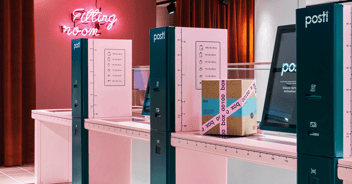Why SAP Analytics Cloud?
The first question you might be asking is why has SAP developed a new planning tool when they’ve had a good business planning and consolidation (BPC) tool for many years? Indeed, many customers have expressed their concern after hearing that SAP BPC will no longer be supported after the end of 2027.
The reason why is that SAP has chosen cloud-based solutions as its strategic direction. Cloud-based solutions offer new innovative features, better integration, and ease of use. When using cloud solutions in a browser, they offer a more flexible and secure way to work compared to traditional, often inflexible planning solutions.
To be honest, I was disappointed when I used SAC planning for the first time at a TechEd hands-on session in 2015. Fortunately, SAP took the feedback they received seriously and invested in product development. In recent years, SAC has developed considerably – and in product comparisons it has been highly ranked.
A wide range of planning futures
SAC includes a wide selection of features familiar from other planning tools, such as:
- top-down or bottom-up planning
- driver-based planning
- multi-currency planning and reporting
- creation of planning master data
- value allocation
- MS Excel integration
- control and monitoring of the planning process
- commenting
In addition, new innovative features have been developed in the tool, such as private (user-specific) planning versions, predictive planning, and the Value Driver Tree. The Value Driver Tree describes the value flows passing through the model and their hierarchical dependencies. It supports manual adjustment of values and enables a detailed visualization of the effects of different expense and income groups on top-level metrics.
SAC also offers a wide range of features for generating data and simulations on the fly including:
- Smart Discovery, which uses artificial intelligence to automatically highlight patterns and relationships
- Smart Insights, which provides key data, time series forecasting for AI-based automatic prediction of planning metrics along with intelligent grouping for finding relationships and deriving automatic clusters
- Smart Predict, where AI-based predictions are driven by a manually created predictive scenario
SAP HANA provides an automated predictive library equivalent to SAP Predictive Analytics as well as the SAP Analytics Cloud Smart Predict engine. Application developers can use predictive models directly in the HANA environment using different programming languages such as R, Python, or SQL.
Easy integration
SAC can be integrated into existing systems. SAC can be integrated with, among others, SAP BW/4HANA, S/4HANA, SuccessFactors, and Salesforce. Data from other systems can be imported using OData or a supplier-specific interface. Data can be written to SAP BW/4HANA 2.0, SAP Datasphere, and S/4HANA. In addition, it’s possible to export data to other systems using OData or a supplier-specific interface.
In sum, SAP Analytics Cloud is one of SAP's innovative solutions that provides comprehensive support for the planning process – and can be easily implanted into existing architectures thanks to a wide range of interface adapters. SAC provides planners with easy-to-use smart functions and visualization capabilities. SAC also enables making sub-plans and forecasts, combining operational and financial plans of different organizations into one common plan.



_Vincit.jpg?width=352&name=1200_450_blog_Five%20more%20reasons%20why%20buying%20software%20development%20could%20save%20your%20startup%20(Part%202)_Vincit.jpg)